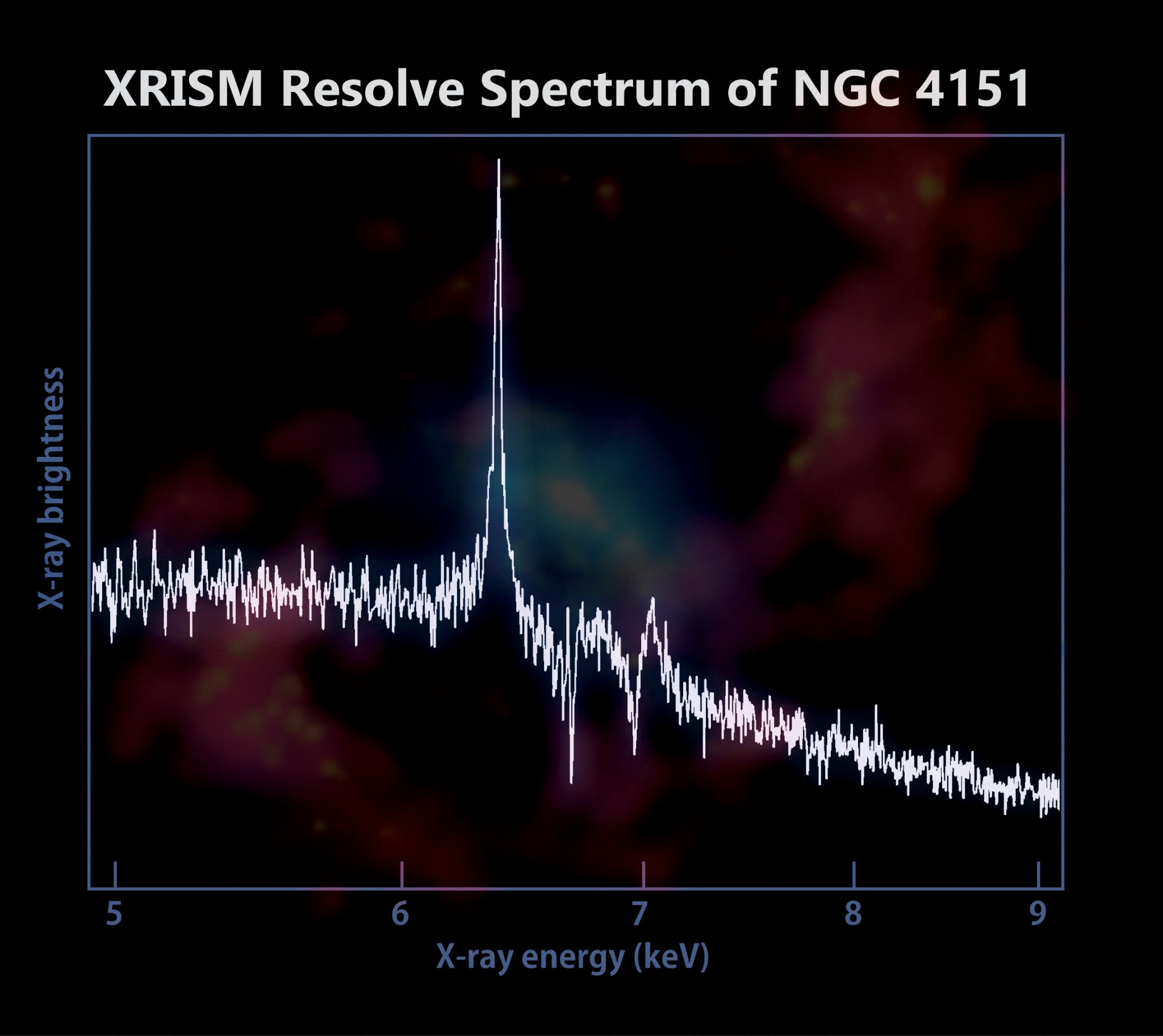3 min read
After starting science operations in February, Japan-led XRISM (X-ray Imaging and Spectroscopy Mission) studied the monster black hole at the center of galaxy NGC 4151.
"XRISM's Resolve instrument captured a detailed spectrum of the area around the black hole," said Brian Williams, NASA's project scientist for the mission at the agency's Goddard Space Flight Center in Greenbelt, Maryland. "The peaks and dips are like chemical fingerprints that can tell us what elements are present and reveal clues about the fate of matter as it nears the black hole."

XRISM (pronounced "crism") is led by JAXA (Japan Aerospace Exploration Agency) in collaboration with NASA, along with contributions from ESA (European Space Agency). It launched Sept. 6, 2023. NASA and JAXA developed Resolve, the mission's microcalorimeter spectrometer.
NGC 4151 is a spiral galaxy around 43 million light-years away in the northern constellation Canes Venatici. The supermassive black hole at its center holds more than 20 million times the Sun's mass.
The galaxy is also active, which means its center is unusually bright and variable. Gas and dust swirling toward the black hole form an accretion disk around it and heat up through gravitational and frictional forces, creating the variability. Some of the matter on the brink of the black hole forms twin jets of particles that blast out from each side of the disk at nearly the speed of light. A puffy donut-shaped cloud of material called a torus surrounds the accretion disk.
In fact, NGC 4151 is one of the closest-known active galaxies. Other missions, including NASA's Chandra X-ray Observatory and Hubble Space Telescope






